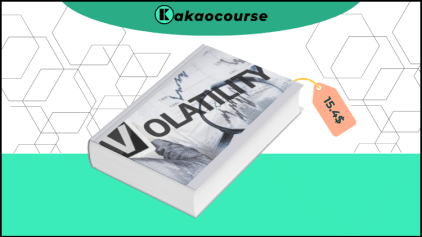Immediately Download Inter Equity Trading Course – Here’s What You’ll Get Inside:
Overview this course
The Inter Equity Trading Course is a structured, practice-driven curriculum for aspiring day traders who want a clear, repeatable process—without chasing signals or hype. Built around liquidity, market structure, and disciplined execution, the program translates price action into step-by-step routines you can practice daily. Instead of handing you entries, it teaches you how to recognize high-probability contexts, define invalidation in advance, and manage trades with composure. 📈
The course philosophy is simple: independence over dependency. You will learn how to prepare before the session, read order flow and structural shifts in real time, and review your decisions afterward with objective criteria. Along the way, you will develop risk habits that keep you in the game—fixed daily loss limits, position sizing rules, and a journaling cadence that steadily improves your edge. This is an ideal self-reliant day trading course for beginners who value a method they can own, test, and refine.
Because the lessons emphasize context first and tactics second, they adapt across instruments and conditions. Whether your focus is equities, futures, or major forex pairs, you will learn to anchor decisions to the same core ideas: where liquidity sits, how price interacts with it, and when momentum or mean reversion is in control. In short, this is a liquidity-based trading strategy taught as a repeatable craft, not a shortcut. 🧭
Why should you choose this course?
-
Principle-first, platform-agnostic. You learn transferable skills—top-down context, structural regimes, and liquidity mapping—that work regardless of broker or charting software.
-
Clarity over complexity. The training trims indicator clutter and focuses on price behavior you can actually see and act on: session timing, sweeps, breaks, retests, and displacement.
-
Independence as the goal. There are no signals to copy. You will build your own playbook, rules for entry and exit, and a personal checklist that fits your schedule and risk tolerance.
-
Risk discipline built in. Expect a pragmatic risk management framework for day trading: fixed R multiples, daily stop thresholds, and playbook-specific management rules that lower variance.
-
Psychology you can practice. Emotional regulation is taught as a skill—pre-market breathwork, commitment scripts, and post-loss resets—making this a practical trading psychology for retail traders component, not theory.
-
Measurable outcomes. Each skill maps to a metric: setup quality score, execution latency, R multiple captured, and rule adherence. Progress becomes visible in your journal rather than in anecdotes. ✨
What You’ll Learn
Market Structure & Liquidity Logic
You will read the market through the lens of structure and resting orders. Learn to identify liquidity pools around obvious highs/lows, understand why price wicks or runs those areas, and recognize the difference between a clean break and a liquidity grab. This foundation turns “noise” into actionable context and helps you avoid chasing.
Session Design & Playbooks
A predictable routine beats improvisation. You will craft a pre-market process—economic calendar scan, top-down mark-ups, and A/B/C setup definitions—so you know exactly what you are looking for before the open. During the session, you will follow a simple step-by-step day trading routine: wait for context, confirm trigger behavior, plan management, execute.
Entries, Invalidation, and Trade Management
Entries are only as good as the invalidation behind them. You will set stops at structural levels (not arbitrary ticks), pre-define partials, and know when to move to break-even. Management rules emphasize “do less, better”: scale methodically, minimize micro-management, and let position logic—not emotions—decide.
Risk Systems That Protect Learning
Survival precedes returns. You will implement daily loss limits, session caps, and a weekly drawdown brake that pauses size after a string of losses. Sizing templates (fixed fractional or volatility-aware) make risk predictable, keeping your focus on execution quality instead of P/L swings.
Playbook Construction & Case Studies
You will build 2–3 core setups—e.g., liquidity sweep to structure break, pullback to displacement, or range reclaim—and document them with examples, triggers, and common failure modes. Case studies show how a setup evolves across market regimes so you can adapt without abandoning rules.
Journaling, Review, and Iteration
Progress compounds when you measure the right things. You will tag trades by setup, quality, and context; track rule adherence; and calculate expectancy per play. A weekly review template helps you prune low-value behaviors, double down on strengths, and update playbook notes with fresh evidence.
Execution Psychology & Process Control
You will learn to separate process from outcome. Pre-trade routines reduce arousal, while post-trade debriefs keep feedback factual. The course normalizes small losses and teaches how to respond to variance—reduce size, maintain reps, and review mechanics—so consistency returns quickly.
Tools & Workflows
The methods are platform-agnostic, but you will adopt habits that translate anywhere: clean chart markup conventions, checklist overlays, and replay sessions to rehearse trigger recognition. You will also learn simple dashboards that visualize metrics such as win rate by session, average hold time, and R captured versus planned.
Ethical Guardrails & Expectations
No promises, no guarantees, and no “easy button.” The framework respects market uncertainty and your capital. You will be encouraged to test ideas small, scale only when metrics justify it, and write rules you can obey on your worst day—not just your best.
Example Weekly Cadence You Can Copy
-
Monday: top-down mark-ups; focus on A-setups only; note time-of-day when they appear.
-
Tuesday: management drill—fixed partials versus structure-based exits; log differences in R.
-
Wednesday: failure study—collect three invalidations, extract common tells, update checklist.
-
Thursday: patience drill—skip first impulse move, wait for retest or reclaim; score rule obedience.
-
Friday: review dashboard; choose one micro-improvement for the next week; reset size if needed.
This cadence turns skill into habit while keeping ambition grounded in data. 📊
Who Should Take This Course?
-
Beginners who want a self-reliant day trading course for beginners that teaches decision-making, not copy-trading.
-
Intermediate traders with inconsistent results who need a liquidity-focused market structure approach to tighten entries, exits, and risk.
-
Busy professionals seeking a self-paced curriculum and a tight routine that fits around work, using checklists and dashboards to compress learning time.
-
Process-oriented learners who thrive on measurable goals, rule tracking, and structured review rather than vague intuition.
-
Multi-market traders who want principles that travel across equities, futures, and forex—one playbook, many instruments.
-
Mindset-conscious traders who understand that psychology is a skill to train and that calm execution is a competitive edge. 🧠
Conclusion
The Inter Equity Trading Course replaces randomness with rigor. You will learn to read liquidity and structure, design a session you can repeat, define invalidation before risk, and manage trades with simple, enforceable rules. By pairing risk systems with execution psychology, the program helps you stay consistent long enough for skill to compound. Most importantly, the course is built for independence: you leave with your own playbook, your own metrics, and a routine that makes improvement inevitable—one planned trade at a time. 🌟
Call to Action
Start building your edge today—enroll in the Inter Equity Trading Course, commit to the process, and turn disciplined practice into durable results.










Reviews
There are no reviews yet.